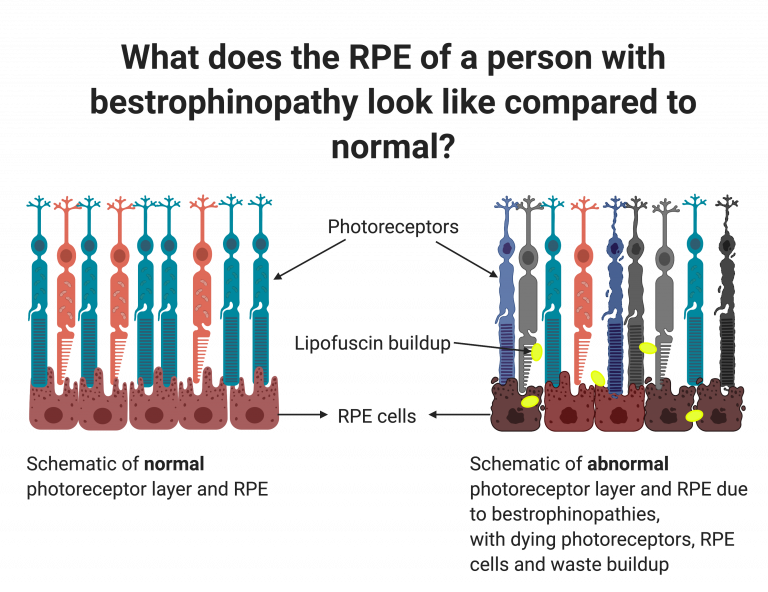What goes wrong in bestrophinopathies?
Many of the processes the photoreceptor cells use to detect light are reliant on healthy RPE. Mutations in BEST1 gene affect the RPE and disrupt these processes.
Mutations in the BEST1 gene affect the way the BEST1 channel works in the RPE cells. This could cause an excess or reduction in the transport of chloride ions into the cell, affecting fluid transport, phagocytosis of retinal debris and other crucial RPE functions. Disruption of these activities could cause the RPE to swell or be less able to process retinal debris. The build of retinal waste can create a physical barrier between the RPE and retina, stopping the RPE cells from looking after the photoreceptor cells. Deposits of fatty waste (lipofuscin) can also create a toxic environment resulting in cell death of RPE and photoreceptor cell death. Ultimately, death of the RPE breaks down the blood:retina barrier, allowing new blood vessels to grow from the choroid to the retina, a complication of bestrophinopathies called choroidal neovascularisation.

The RPE and retinal cells we are born with are not capable of regeneration and they cannot be replaced by the body if they die. Loss of these cells therefore leads to permanent vision loss. Research is now focusing on defining the role(s) of BEST1 in the RPE, finding out how mutations affect that role, and developing treatments that can prevent cell loss and therefore vision loss.
 Close
Close

